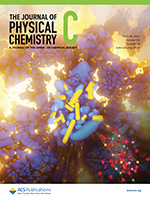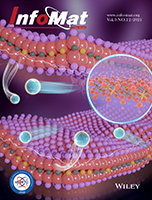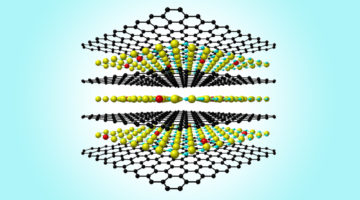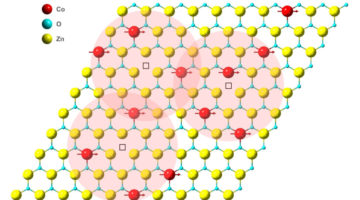An intermediate polymorph of iron oxide, ε-Fe2O3, has attracted significant attention for potential applications in high-frequency mm-wave absorption and high-density magnetic recording. However, fabrication is still a challenge. Here, we identified critical reaction parameters to improve the phase purity and tested their effects. Read more »
ALS Work Using XAS
In x-ray absorption spectroscopy (XAS), the incident x-ray energy is tuned over a range that will excite core-level electrons. Sharp increases in absorption occur at specific energies, characteristic of the absorbing element. The resulting spectra probe the elemental composition as well as the chemical and electronic structure of the material.
Revealing Lithium Metal’s Electronic Structure
Spectroscopy at the ALS and theoretical calculations at the Molecular Foundry revealed the intrinsic spectroscopic signature of lithium metal and explained the origin of previous contradictory reports. The findings provide a benchmark for further studies of lithium compounds towards batteries with higher capacity and energy density. Read more »![]()
![]()
Synthesis of new two-dimensional titanium carbonitride Ti2C0.5N0.5Tx MXene and its performance as an electrode material for sodium-ion battery
Researchers report on the synthesis and characterization of a new 2D carbonitride MXene, Ti2C0.5N0.5. They explore the performance of this new MXene as electrode materials for sodium-ion batteries (SIBs). It outperformed its carbide counterpart (i.e., Ti2C) and all the other reports for multilayer MXenes in SIBs, and it showed a stable electrochemical performance over 500 cycles. Read more »
How Iron Remediates Arsenic in Groundwater
Though iron has been demonstrated as an effective means to remediate arsenic contamination in groundwater, the mechanism was not well understood until now. For the first time, researchers have untangled the detailed steps of the interaction, informing more robust strategies for cleanup. Read more »
Interface Sensitivity in Electron/Ion Yield X-ray Absorption Spectroscopy: The TiO2–H2O Interface
To understand corrosion, energy storage, (electro)catalysis, etc., obtaining chemical information on the solid–liquid interface is crucial but remains extremely challenging. Here, x-ray absorption spectroscopy is used to study the solid–liquid interface between TiO2 and H2O. This result highlights the potential of electron-yield XAS to obtain chemical and structural information with a high sensitivity for the species at the electrode–electrolyte interface. Read more »
Trace Key Mechanistic Features of the Arsenite Sequestration Reaction with Nanoscale Zerovalent Iron
The advancing in situ XAS technique made it possible to uncover the As-nZVI reaction pathway, especially capturing transient reaction process at subsecond scale. Combining the in situ XAS experimental data with computational chemistry enabled the reaction steps to be verified, clarifying the unambiguous identification of the transit reactive intermediates. Read more »
A Two-Dimensional Room-Temperature Magnet
Researchers have made the world’s thinnest (one atom thick) magnet that’s chemically stable under ambient conditions. The two-dimensional material, magnetically characterized at the ALS, could enable big advances in next-generation memory devices, computing, spintronics, and quantum physics. Read more »![]()
![]()
David Prendergast Wins 2021 Shirley Award
David Prendergast, an internationally recognized computational scientist whose first-principles calculations of x-ray spectra have helped with the interpretation of countless experiments done at the ALS, has been awarded the 2021 Shirley Award for Outstanding Scientific Achievement by the ALS Users’ Executive Committee. Read more »
Main Attraction: Scientists Create World’s Thinnest Magnet
A one-atom-thin 2D magnet that operates at room temperature could lead to new applications in computing and electronics—such as high-density, compact spintronic memory devices—and new tools for the study of quantum physics. X-ray experiments at the ALS characterized the material’s magnetic parameters under high temperature. Read more »
Scientists Uncover a Different Facet of Fuel-Cell Chemistry
Solid oxide fuel cells are a promising technology for cleanly converting chemical energy to electrical energy. To improve the efficiency of these devices, researchers studied a model electrode material in a new way—by exposing a different facet of its crystal structure to oxygen gas at operating pressures and temperatures. Read more »
- « Previous Page
- 1
- 2
- 3
- 4
- 5
- …
- 10
- Next Page »









